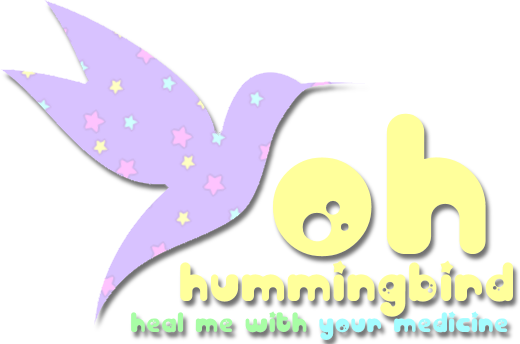little hummingbird can I talk to you

One of my favorite things to do is watch the hummingbirds in my backyard. They're so colorful. Hummingbirds are also quite loud for how small they are. I can hear them singing in the backyard, and when they fly through the sky and make their chirps. I love being able to pick their sounds out of a crowd. On this page you will find information about how to care for the hummingbirds that visit your backyard sanctuary, and pictures of some of the ones who visit me. I hope you enjoy!
How to Make Your Own Nectar: 1 part granulated sugar & 4 parts waterTo help mix and dissolve sugar, bring water to a boil then add the sugar and mix well. Let cool completely before adding to feeders. DO NOT USE RED DYE OR ANY OTHER ADDITIVES IN THE MIX Store any extra in the fridge for up to 2 weeks.
Refilling Feeders: When do you change the nectar out? Rule of thumb is anytime the water is cloudy, has mold or has bees or ants, replace the nectar. The goal is to provide clean and safe nectar in a 1:4 ratio sugar to water.
If nectar is clear and temps are above 80°F/26°C and humid, change your nectar every 2 days.
If below 80°F/26°C and above 60°F/15°C, every 3-4 days.
If below 60°F/15°C, every 5 days
Cleaning Feeders: Clean feeders every time you replace nectar recipe, or when you have bees or other insects on them.
Wash out container using a non-abrasive cleaning solution. For example Dawn dish detergent or distilled vinegar is best. Use hot water to rinse out completely
Clean feeding holes with small wire brushes, often found in supermarkets in with the dental floss.
No need to put feeders into the dishwasher, as this may remove any exterior color from your feeder. Verify if your feeder is dishwasher safe if you want to do it.
Window Decals: When using window feeders, we suggest using window decals which will help prevent window strikes. Window strikes can result in major injuries in birds, and possibly immediate death. The use of decals on windows helps birds determine distance to the feeder. They also create an illusion that other objects or birds are present and slows their approach to the feeder. You can find window decals at various stores and online supplies such at Wild Birds Unlimited and Amazon.
Got Ants?: If you have a problem with ants, please use ant moats filled with water only. Do not use vaseline or any oil based product on or around your feeder, ground, or hooks. Be sure to use feeders that are leak proof. Never use insecticide sprays or chemicals near your feeders
Have a Praying Mantis?: A praying mantis can be good for our garden pests but does not belong on or anywhere near a hummingbird feeder. It can grab, stun, and kill a hummingbird. Please do not kill them. Relocate them if you find one near your feeder
Got Bees or Wasps?: Bee guards can be added to feeders. Google "Bee Guards for Feeders". Usually found online. If you have a saucer type feeder with ports on top, keep your nectar level lower so the bees and wasps can't reach it easily. Look for leak proof feeders, for example "aspects hummingbird feeders". They also may be thirsty. Provide a shallow saucer near the feeder or table with some rocks so they can easily get a drink and safely get out. You can also offer a water oasis a bit further away from the feeders as well. Never use insecticide sprays or chemicals near your feeders.
What is Torpor?: Torpor is a slowing down of the metabolic functions, allowing an animal to use less energy. Hummingbirds often go into a state of torpor at night to conserve energy while they sleep, especially on cold nights.
While a torpid state helps them survive, it also slows down their ability to wake up quickly. If a predator is close by, this can be fatal. When waking up from a torpid state, they also need to take in large amounts of food to return to a normal state of functioning. This is often why we see them hanging onto or sitting at a feeder for an extended period of time. Please do not disrupt them during this time
Useful Links: Hummingbirds Anonymous // Outdoor Nevada - Hummingbirds // Southern Nevada Pollinator Plants // Plants for Birds by Zipcode // Tucson Audubon's Paton Center for Hummingbirds // Hummingbird Spot // Hummingbird Spot videos
my hummingbird friends
 |  |  |
 |  |  |
 |  |  |
 |  |  |
 |  |  |
 |  |  |
 |  |  |
 |  |  |
 |  |  |
 |  |  |
 |  |  |
 |  |  |
 |  |  |
 |  |  |
 |  |  |
 |  |  |
 | tba | tba |